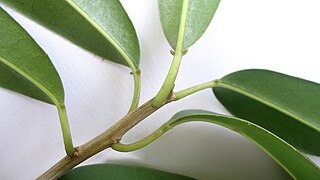
Sapium is a genus of flowering plants in the family Euphorbiaceae. It is widespread across most of Latin America and the West Indies. Many Old World species were formerly included in the genus, but recent authors have redistributed all the Old World species into other genera.

Chusquea is a genus of evergreen bamboos in the grass family. Most of them are native to mountain habitats in Latin America, from Mexico to southern Chile and Argentina.

Psidium is a genus of trees and shrubs in the family Myrtaceae. It is native to warmer parts of the Western Hemisphere.
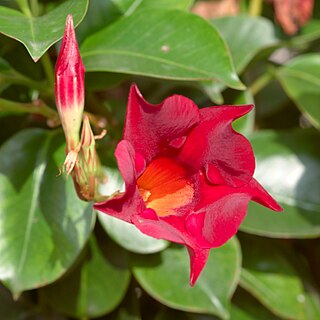
Mandevilla is a genus of tropical and subtropical flowering vines belonging to the family Apocynaceae. It was first described as a genus in 1840. A common name is rocktrumpet.

Cnidoscolus is a plant genus of the family Euphorbiaceae first described as a genus in 1827. The group is widespread across much of North and South America, including the West Indies.

Manihot is a genus in the diverse milkspurge family, Euphorbiaceae. It was described as a genus in 1754.
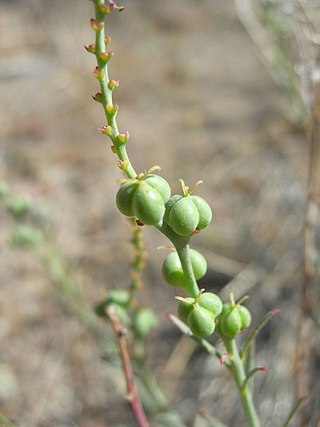
Stillingia is a plant genus of the family Euphorbiaceae, first described for modern science as a genus in 1767. The genus is native to Latin America, the southern United States, and various islands in the Pacific and Indian Oceans. Toothleaf is a common name for plants in this genus.

Bothriochloa is a common and widespread genus of plants in the grass family native to many countries on all inhabited continents and many islands. They are often called beardgrass, bluegrass or bluestem. Some species are invasive in areas where they have been introduced.

Syngonanthus is a genus of flowering plants in the family Eriocaulaceae. It is native to tropical Africa and to Latin America.

Axonopus is a genus of plants in the grass family, known generally as carpet grass. They are native primarily to the tropical and subtropical regions of the Americas with one species in tropical Africa and another on Easter Island. They are sometimes rhizomatous and many are tolerant of periodic submersion.
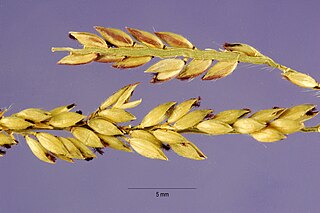
Eriochloa is a widespread genus of plants in the grass family, commonly called cupgrass. They are found across much of Africa, Asia, Australia, and the Americas, plus a few places in European Russia.
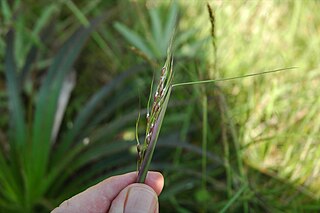
Piptochaetium, or speargrass, is a genus of plants in the grass family, native to North and South America. Piptochaetium is a bunchgrass genus in the tribe Stipeae.
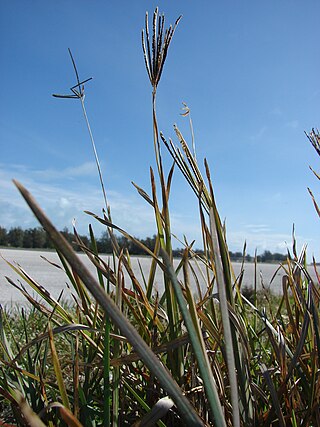
Eustachys is a genus of tropical and subtropical plants in the grass family. It is native primarily to warmer parts of the Americas, with a few species in Africa and Asia.

Schizachyrium is a widespread genus of plants in the grass family. The name is derived from the Ancient Greek words σχίζειν, meaning "to split," and ἄχυρον, meaning "chaff." It refers to either the glume or the toothed lemmas.
Steinchisma is a genus of plants in the grass family, native to the Americas but a few of them naturalized in Africa.

Olyra is a genus of tropical bamboos in the grass family. It is native primarily to the Western Hemisphere, with one species extending into Africa.

Tridens is a genus of perennial grasses in the family Poaceae native to the Americas.
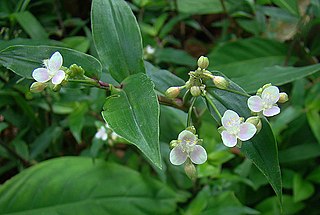
Tripogandra is a genus of flowering plants in the spiderwort family, Commelinaceae. It is native to the Western Hemisphere from central Mexico and the West Indies south to Argentina.

Astraea is a plant genus of the family Euphorbiaceae first described as a genus in 1841. It is native to tropical regions of the Western Hemisphere.


















